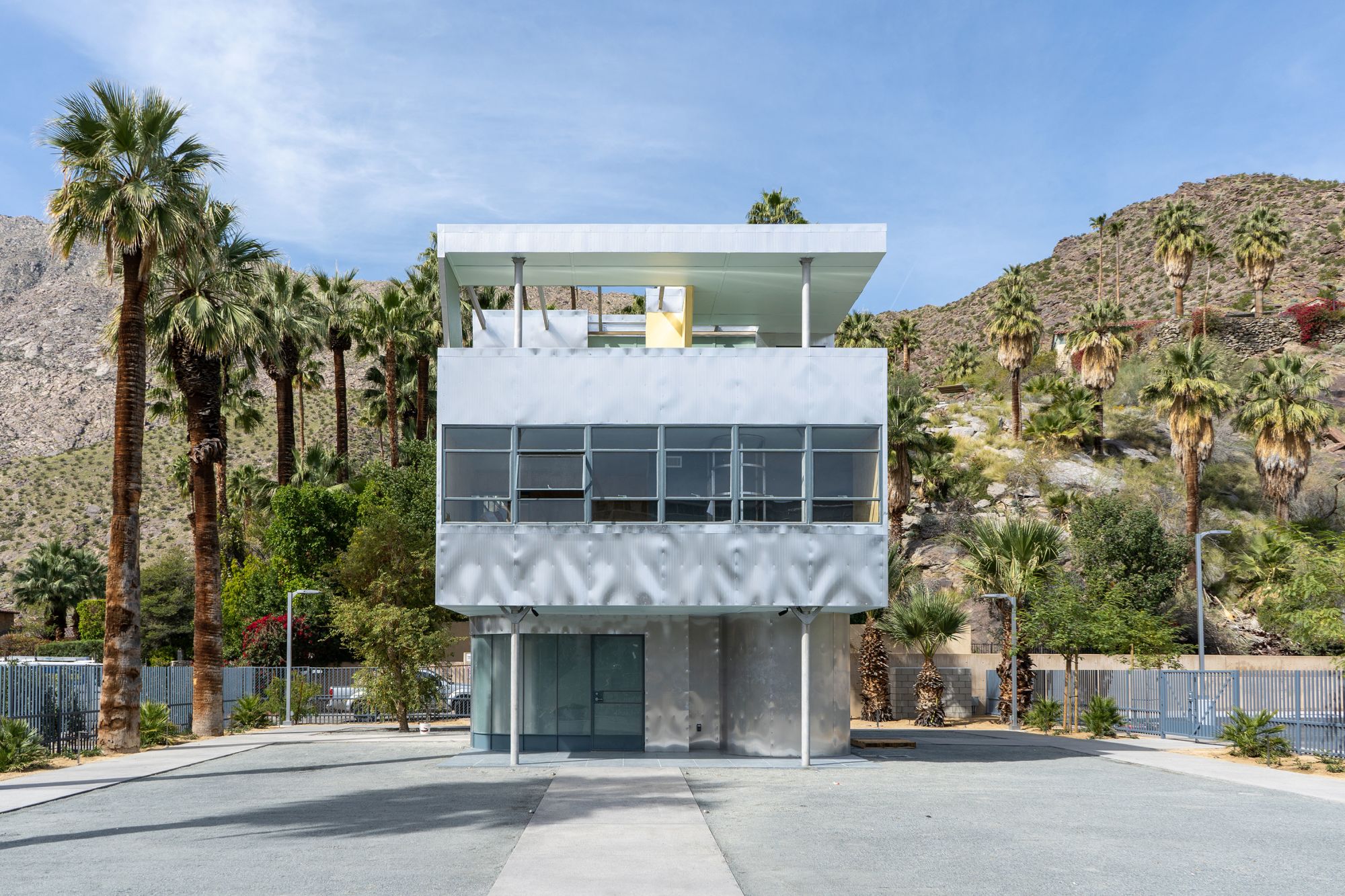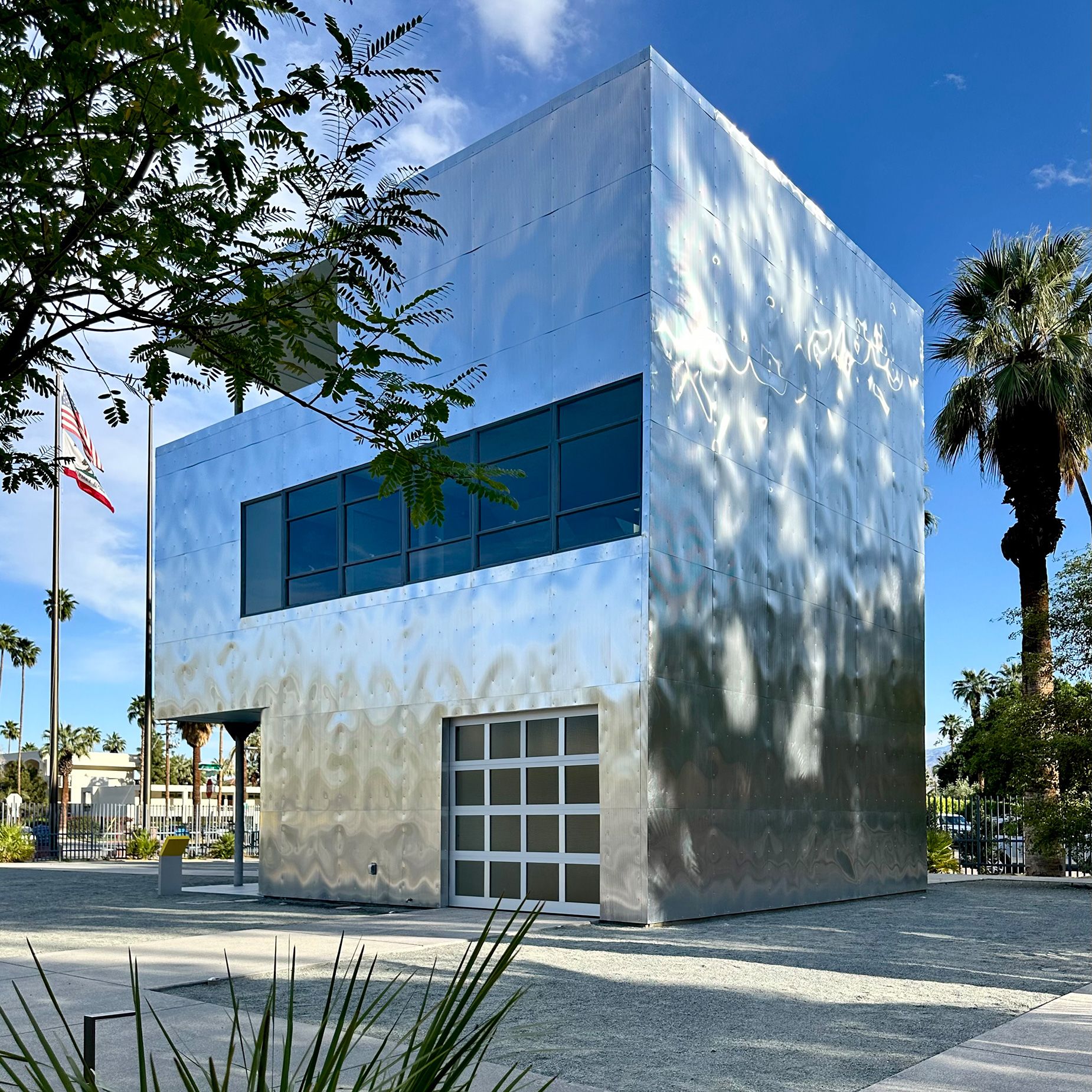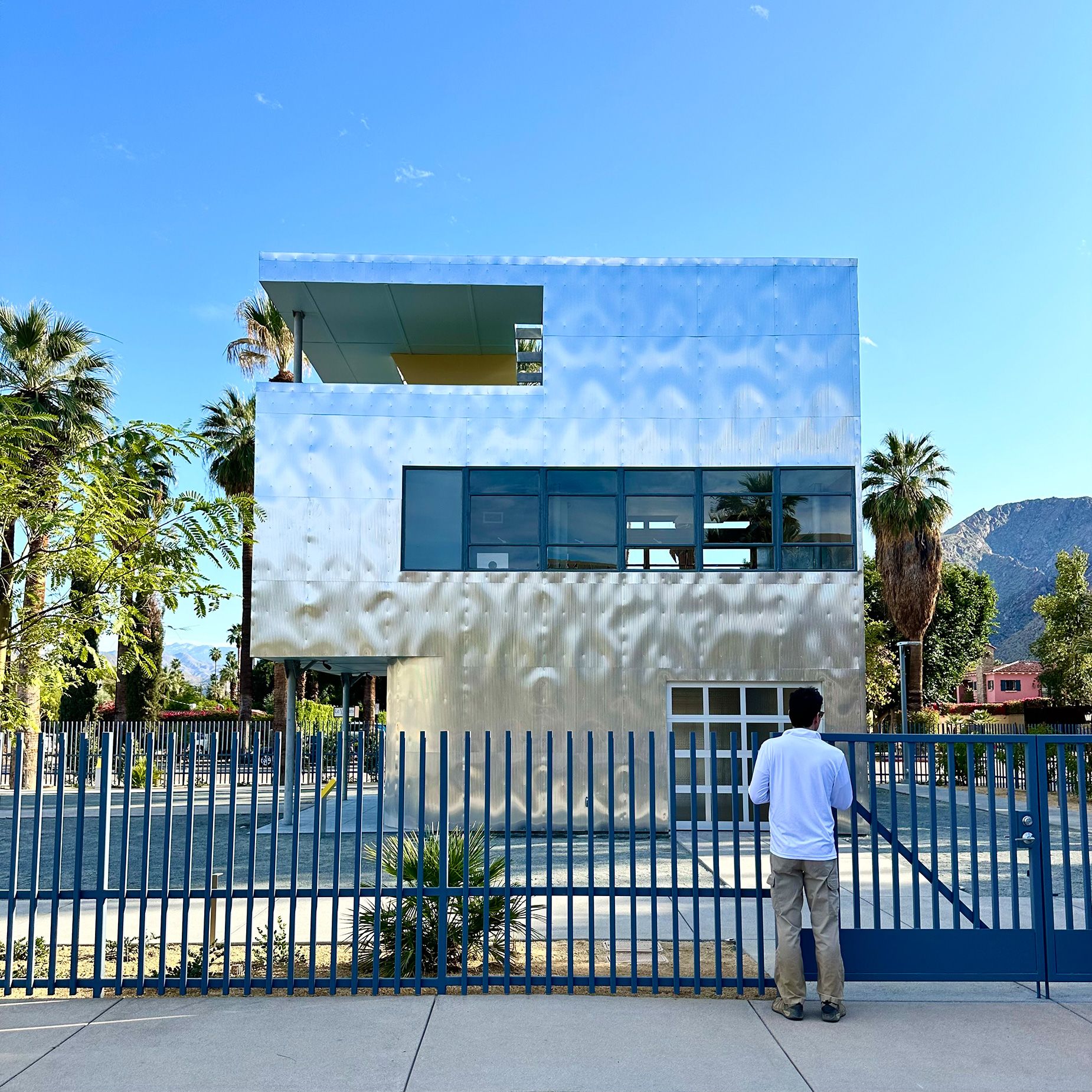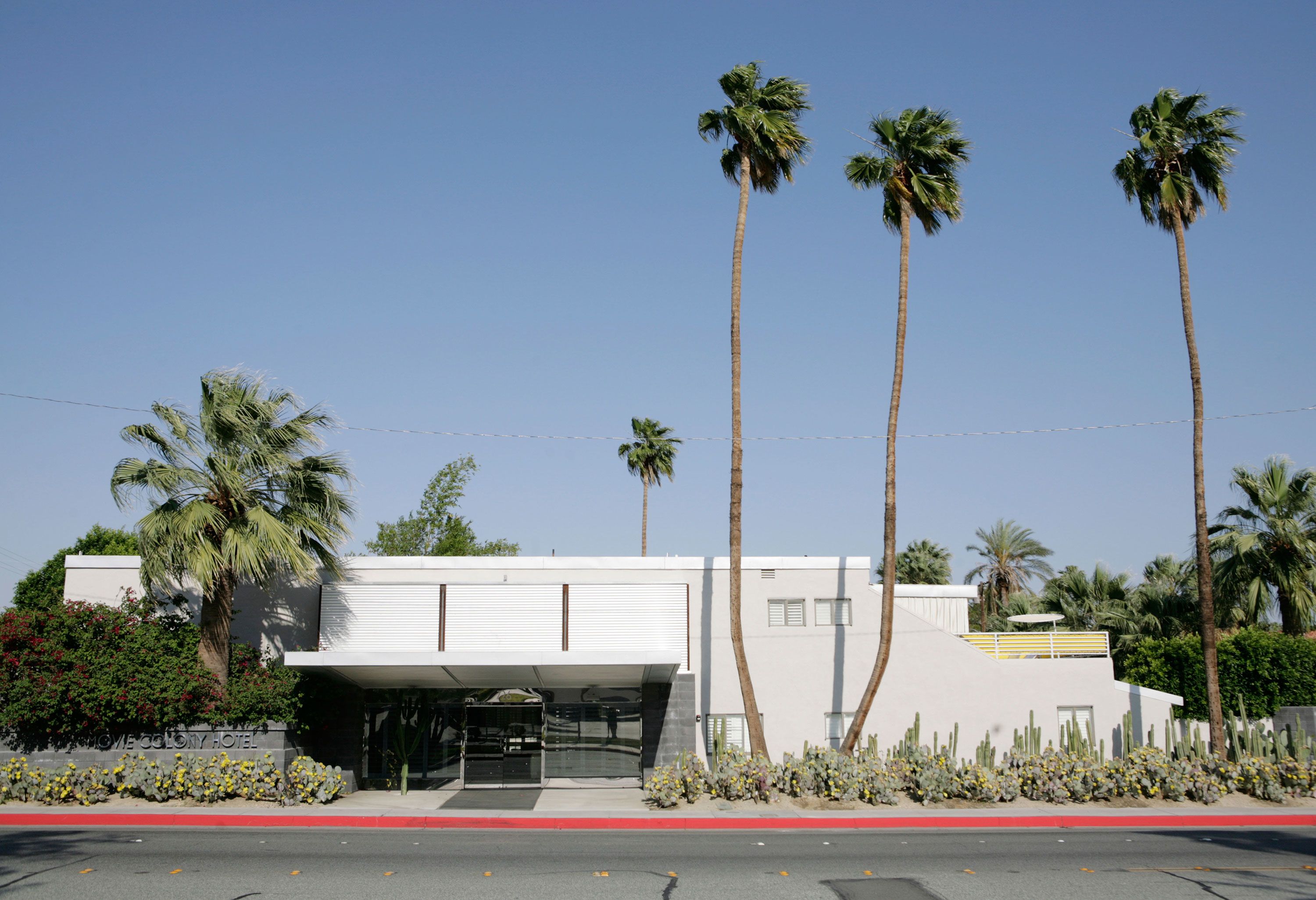How did an innovative exhibition house, designed in New York City in 1931 — and only meant to stand for seven days during a building trade expo — find itself rebuilt 93 years later in southern California? Now part of the permanent collection at the Palm Springs Art Museum, the story of Albert Frey’s “Aluminaire House,” and its significance in the history of architecture is quite remarkable.
“Aluminaire — a House for Contemporary Life,” was designed by the Swiss-born Frey, alongside architect Lawrence Kocher (who was also the editor of “Architectural Record” magazine). Frey found work with Kocher shortly after arriving in New York, having previously worked in the office of the French architect Le Corbusier. Through Kocher’s connections, they got the job of designing an exhibition house for the Architectural and Allied Arts Exposition, a trade fair demonstrating new products and ideas for the construction industry. Their design was meant to be the centerpiece of the show and attract the general public.
The house was small — it had to fit inside an exhibition hall in Manhattan, after all — and entirely clad in corrugated aluminum panels over a steel frame. Elevated on pylons, it seemed to float lightly on the landscape. Very unusually for the time, large areas of glass let inhabitants connect with the outdoors, and the upper level housed an outdoor garden. Frey’s designs were fresh, precise, beautiful, and rigorous in their use of basic, off-the-shelf materials. This simplicity belied the genius of the man that created them.
But it was the ideas that the house embodied that made it so important in the canon of Frey’s work: The style was European but the construction was all American in its assembly-line nature, using off-the-shelf materials. It showed the public in three dimensions how ideas put forth by Le Corbusier and the Bauhaus movement — simplicity in design and honesty in construction — could be translated into a new and modern way of living. It had an inventiveness and optimism that had not yet been seen in the US, and offered a solution for low-cost housing so prescient for the times.
Aluminaire House was a front-page story in national newspapers and appeared on the covers of numerous news magazines. One hundred thousand people toured the property in a single week. If you had never seen a modern house — and most Americans had not — it probably looked like a set for a science fiction movie. Even today, it looks “like it’s from another planet,” said Palm Springs Art Museum CEO Adam Lerner.
Immediately after the exposition, however, Aluminaire House vanished from the public eye — and was not heard of again for some 50 years.
But it had not traveled far. Another modern architect, Wallace K. Harrison, had bought the house immediately after the exhibition for $1000 (roughly $20,000 today) and moved it to his property in Syosset, New York, as an inexpensive solution for a weekend home. There it remained in near anonymity, suffering from unsympathetic renovations and increasing deterioration over the years.
In 1987, while researching a book on Frey, the author, educator, and architect Joseph Rosa found the long-lost house. By then, the building was in extremely poor condition. Rosa quickly mobilized the preservation community, and a tremendous effort was made to publicize the history and importance of the house and ultimately save it from demolition.
Aluminaire House found a savior in particular in Michael Schwarting, chair of the architecture program at the New York Institute of Technology (NYIT) in nearby Islip. Schwarting and his wife, architect Frances Campani, arranged to transfer the house to NYIT in 1988, where it functioned as a class project and was slowly rebuilt by groups of architecture students over many years. (According to Schwarting, this painstaking process followed New York state historic restoration guidelines, which mandated using “as much original material as possible.”)
After the NYIT’s Islip campus closed in 2005, however, the house was on the move once again.
In 2011, Schwarting and Campani formed the Aluminaire Foundation to preserve the house, which was once more disassembled and stored in a truck trailer, where it sat for years. A proposal in 2013 to relocate it to a 1930s modernist housing development in Sunnyside, Queens fell through. In 2015, a plan to move it cross-country to Palm Springs was first broached, and widely-seen as the perfect location — or relocation, rather: The city was not only Frey’s home from 1934, until his death in 1998, but also the site of much of his built work.
After years of negotiations and fine-tuning the logistics, the Foundation donated Aluminaire House to the Palm Springs Art Museum in 2020, which subsequently raised $2.6 million to cover the cost of its rebuilding and future care. Now installed on the museum’s grounds just down the hill from Frey’s own home, Schwarting and Campani remained involved as the historical architects tasked with reassembling the house as it would have been in 1931.
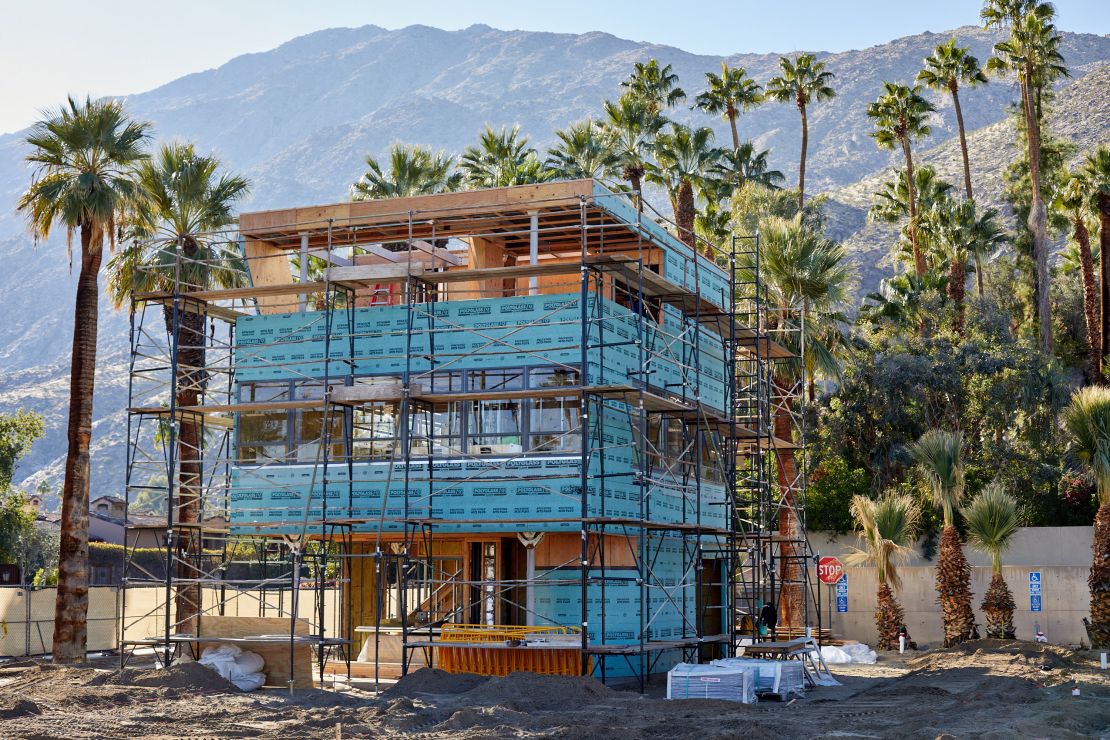
It’s a responsibility all involved took seriously. The house’s original panels, for example, have been analyzed by aluminum experts at the Alcoa Corporation to ensure the alloy of the replacement pieces would be the same, Schwarting and Campani told CNN; the fine vertical corrugation pattern that gives the panels both their rigidity and metallic shine is now perfectly replicated.
For now, visitors will not be able to enter the house as they would have in 1931. However, Frey’s signature palette — yellow, pale blue, coral, sage green, and beige, colors he used his entire life — as originally applied to interior walls and ceilings will be visible through the house’s large panes of glass. (In the future, the museum hopes to produce a virtual tour experience.)
Architect and Palm Springs Art Museum board member Leo Marmol calls the house “an educational piece of sculpture.” It contributes to both our understanding of how, and where, modern architecture originated, but more importantly, according to the museum’s CEO Adam Lerner, “it shows that modernism was rooted in a faith that society would be better off with new ideas — a design philosophy focused on making people’s lives better.”
It is fitting, then, that this little vagabond of a house has finally come to permanent rest here in Palm Springs, the mecca of mid-century modern. Frey himself would surely be pleased.
